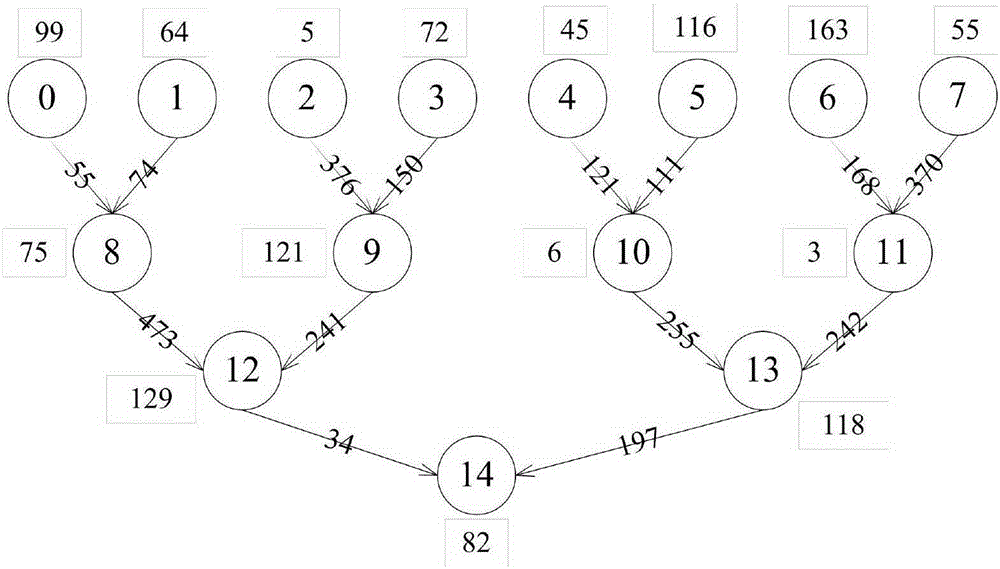Iterative static task list scheduling algorithm for multi-processor system
A multi-processor system and scheduling algorithm technology, applied in electrical digital data processing, instrumentation, computing, etc., can solve problems such as poor scheduling results, large scheduling length, and low application execution efficiency, and achieve easy implementation and high flexibility. The effect of simple, static task scheduling algorithm
- Summary
- Abstract
- Description
- Claims
- Application Information
AI Technical Summary
Problems solved by technology
Method used
Image
Examples
Embodiment Construction
[0027] In this embodiment, on a multiprocessor system with four processors, the execution process of the iterative static task list scheduling algorithm is roughly as follows:
[0028] 1. Set the initial value of the current optimal task priority sequence, and the corresponding static list scheduling length as the initial value of the current optimal scheduling length;
[0029] 2 Generate a new task priority sequence from the current optimal task priority sequence, and if the corresponding static list scheduling length is less than the current optimal scheduling length, update the current optimal scheduling length and the current optimal task priority sequence;
[0030] 3 Repeat step 2 until the number of executions reaches the specified upper limit;
[0031] 4 Execute steps 1 to 3 for each optimal task priority sequence;
[0032] 5 Select the minimum value from all optimal scheduling lengths as the final scheduling result.
[0033] Specifically, if figure 2 shown, yes fi...
PUM
 Login to View More
Login to View More Abstract
Description
Claims
Application Information
 Login to View More
Login to View More - R&D
- Intellectual Property
- Life Sciences
- Materials
- Tech Scout
- Unparalleled Data Quality
- Higher Quality Content
- 60% Fewer Hallucinations
Browse by: Latest US Patents, China's latest patents, Technical Efficacy Thesaurus, Application Domain, Technology Topic, Popular Technical Reports.
© 2025 PatSnap. All rights reserved.Legal|Privacy policy|Modern Slavery Act Transparency Statement|Sitemap|About US| Contact US: help@patsnap.com



